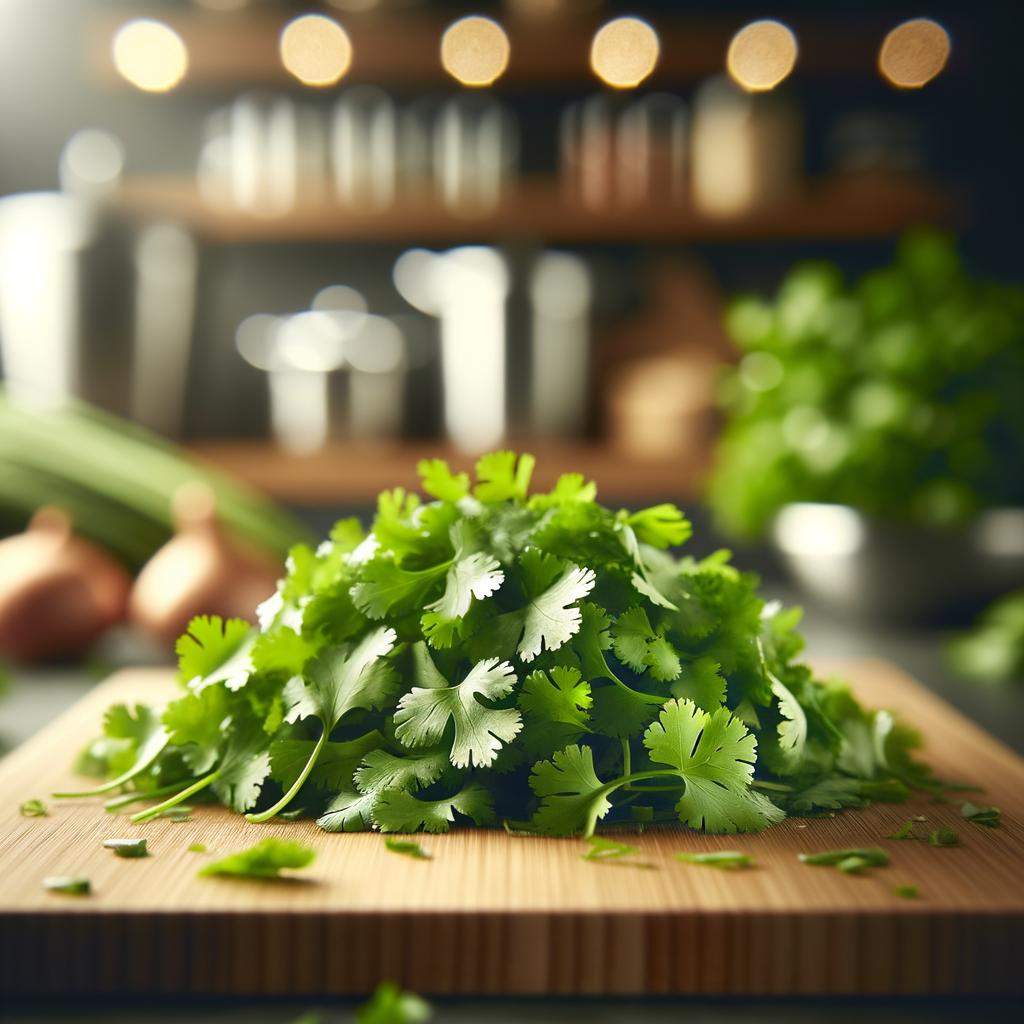Chopped Cilantro

Description
Cilantro, also known as coriander, is a vibrant green herb that graces our plates with its delicate, lacy leaves. Its appearance is akin to flat-leaf parsley, yet its unique characteristics make it a world apart. The leaves are soft, yet robust, with a texture that is both crisp and tender. The flavor profile of cilantro is complex, offering a citrusy freshness with an underlying hint of peppery spice. Some people find it has a soapy flavor due to a genetic trait, making cilantro a truly polarizing ingredient. This herb is a chameleon in the culinary world, transforming and enhancing the flavors of a dish while maintaining its own distinct identity.
Primary Uses
Cilantro is a versatile herb that adds a fresh, bright flavor to a wide array of dishes. It is a key component in many cuisines, from the fragrant curries of India to the spicy salsas of Mexico. In Vietnamese cuisine, it's often used as a garnish in pho, a traditional noodle soup. Its leaves and stems can be used raw or cooked, and it's often added at the last moment to preserve its lively flavor. Beyond its culinary uses, cilantro is also used in traditional medicine for its potential antioxidant properties and is a symbol of love and fertility in some cultures.
History
Cilantro has a rich history that dates back to ancient times. It was found in the tomb of Tutankhamun, suggesting its use in ancient Egyptian culture. The Romans used it to mask the smell of rotten meat, while the Greeks used it as a component of perfume. Over time, cilantro has traveled the globe, making its way from the Mediterranean to Asia and the Americas, each culture embracing and incorporating this herb in its own unique culinary traditions. Folklore tells us that cilantro was believed to be an aphrodisiac and was even used in love potions in the Middle Ages.
Nutritional Information
Nutritionally, cilantro is a powerhouse. It is low in calories, yet high in vitamins and minerals. It's a good source of Vitamin A, C, and K, and also provides dietary fiber, calcium, and iron. It contains antioxidants that may aid in reducing inflammation and preventing disease. Compared to similar herbs, cilantro holds its own, offering a comparable nutritional profile to parsley but with a distinct flavor profile. While it's generally safe to consume, those with allergies to other plants in the same family may experience reactions. Overall, cilantro is a delightful addition to a healthy diet, enriching our meals not just with flavor, but also with its remarkable nutritional benefits.

